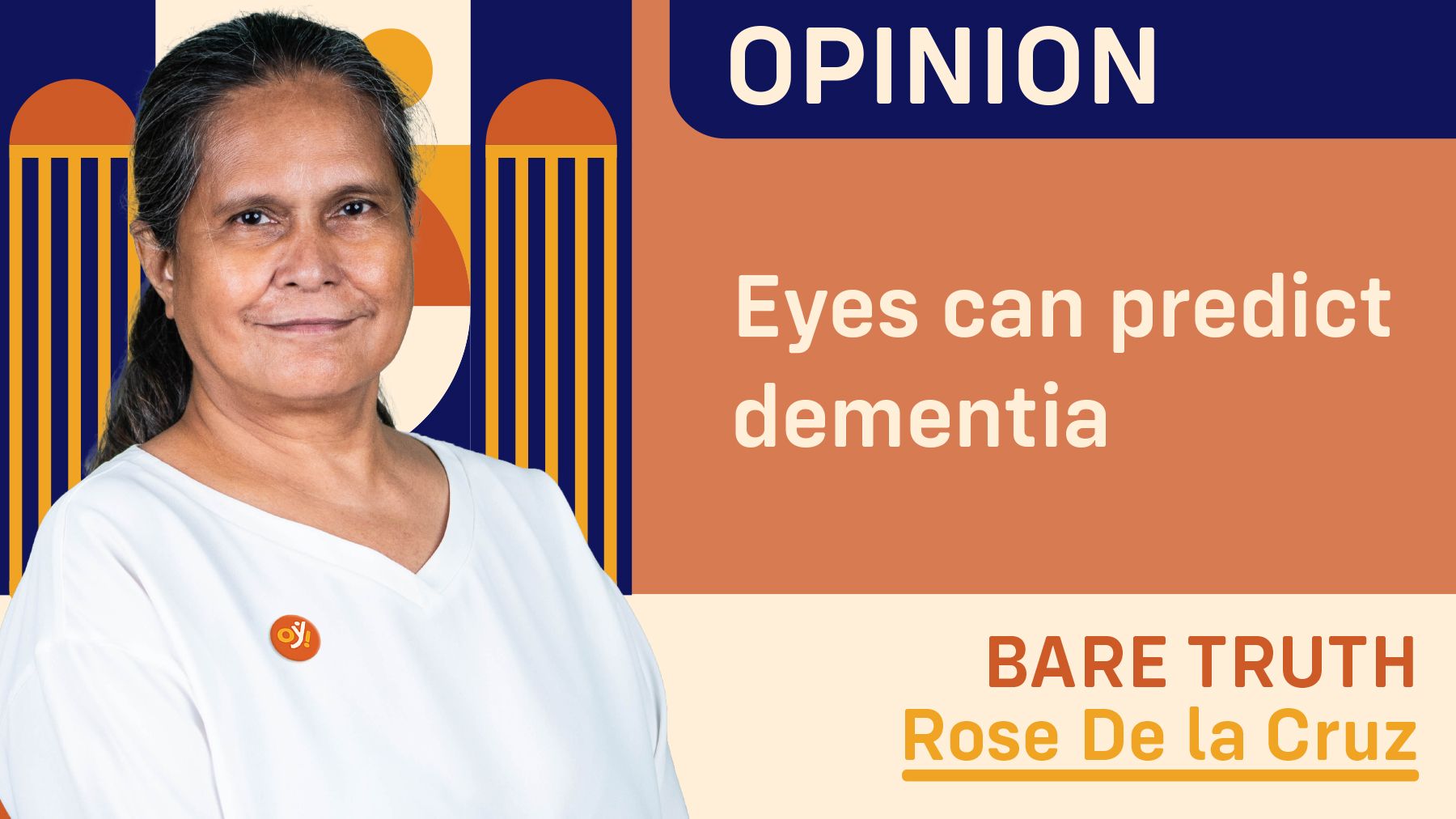An interesting study published in the Conversation website last April 13, says that the eyes can reveal a lot about our brain’s health and that problems with the eyes can be one of the earliest signs of a cognitive decline.
The latest study shows that a loss of visual sensitivity can predict dementia 12 years before it is diagnosed.
The Conversation UK Editor Jo Adetunji said “our latest study shows that a loss of visual sensitivity can predict dementia 12 years before it is diagnosed.” Below are their research findings:
Their research was based on 8,623 healthy people in Norfolk, England, who were followed up for many years. By the end of the study, 537 participants had developed dementia, “so we could see what factors might have preceded this diagnosis.”
At the start of the study, they asked participants to take a visual sensitivity test. For the test, they had to press a button as soon as they saw a triangle forming in a field of moving dots. People who would develop dementia were much slower to see this triangle on the screen than people who would remain without dementia.
Visual issues may be an early indicator of cognitive decline as the toxic amyloid plaques associated with Alzheimer’s disease may first affect areas of the brain associated with vision, with parts of the brain associated with memory becoming damaged as the disease progresses. So vision tests may find deficits before memory tests do.
Other aspects of visual processing that are affected in Alzheimer's disease, are the ability to see outlines of objects (contrast sensitivity) and to discern between certain colors (the ability to see the blue-green spectrum is affected early in dementia), and these can affect people's lives without them being immediately aware of it.
Another early sign of Alzheimer's is a deficit in the "inhibitory control" of eye movements, where distracting stimuli seem to hold attention more readily.
People with Alzheimer's seem to have an issue ignoring distracting stimuli, which may show up as eye-movement-control issues.
If dementia makes it harder to avoid distracting stimuli, then these problems could increase the risk of driving accidents – something we are currently investigating at Loughborough University.
People with dementia tend to process new people's faces inefficiently. In other words, they don't follow the usual pattern of scanning the face of the person they are talking to.
In healthy people, this would be from eyes to nose to mouth. We do this to "imprint" the face and remember it for later. People can sometimes sense when the person they are talking to does not do this.
In fact, some doctors working with people with dementia will recognise them as “sometimes seeming lost, because they do not purposefully move their eyes to scan the environment, including that of the face of the people they have just met. This is because they are ess able to recognise whose features they have not imprinted (but this has to do with ineffective eye movement for new faces) but being a pure memory disorder.
Can eye movement improve memory? Since visual sensitivity is related to memory performance (even using non-visual tests), we are also testing whether getting people to do more eye movements helps to improve memory.
Previous research on the matter is mixed, but some studies indicate that eye movement can improve memory, which could explain why we found that people who watch TV more and read more have better memory and less dementia risk than those who do not.
Other studies found that rapid eye movements from left to right and right to left done quickly (two eye movements per second) were found to improve autobiographical memory (your life story). However, some studies suggest this beneficial effect of eye movement only benefits right-handed people.
Despite these exciting findings, treatment for memory problems using deliberate eye movements in older people has not been done that much yet. Also, using deficits in eye movements as a diagnostic is not a regular feature, despite the possibilities in eye movement technology.
One of the bottlenecks may be access to eye-tracking technologies, which are expensive and require training to use and analyze. Until cheaper and easy-to-use eye trackers are available, using eye movements as a diagnostic tool for early-stage Alzheimer's is not possible outside the laboratory.
#WeTakeAStand #OpinYon #OpinYonColumn #ColumnbyRosedelaCruz #BareTruth
